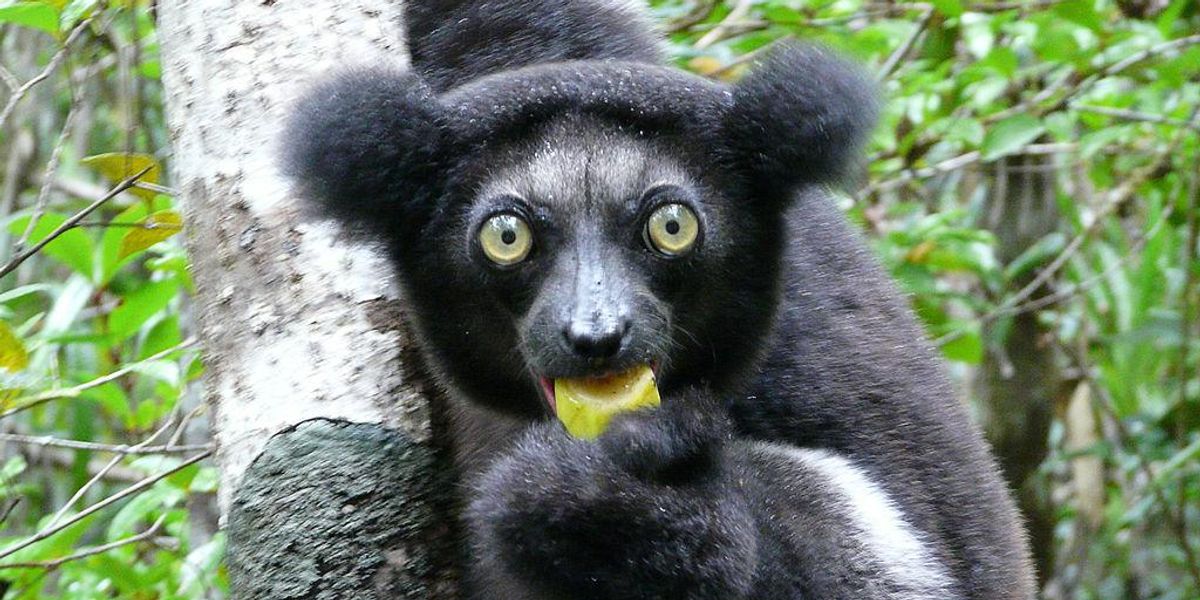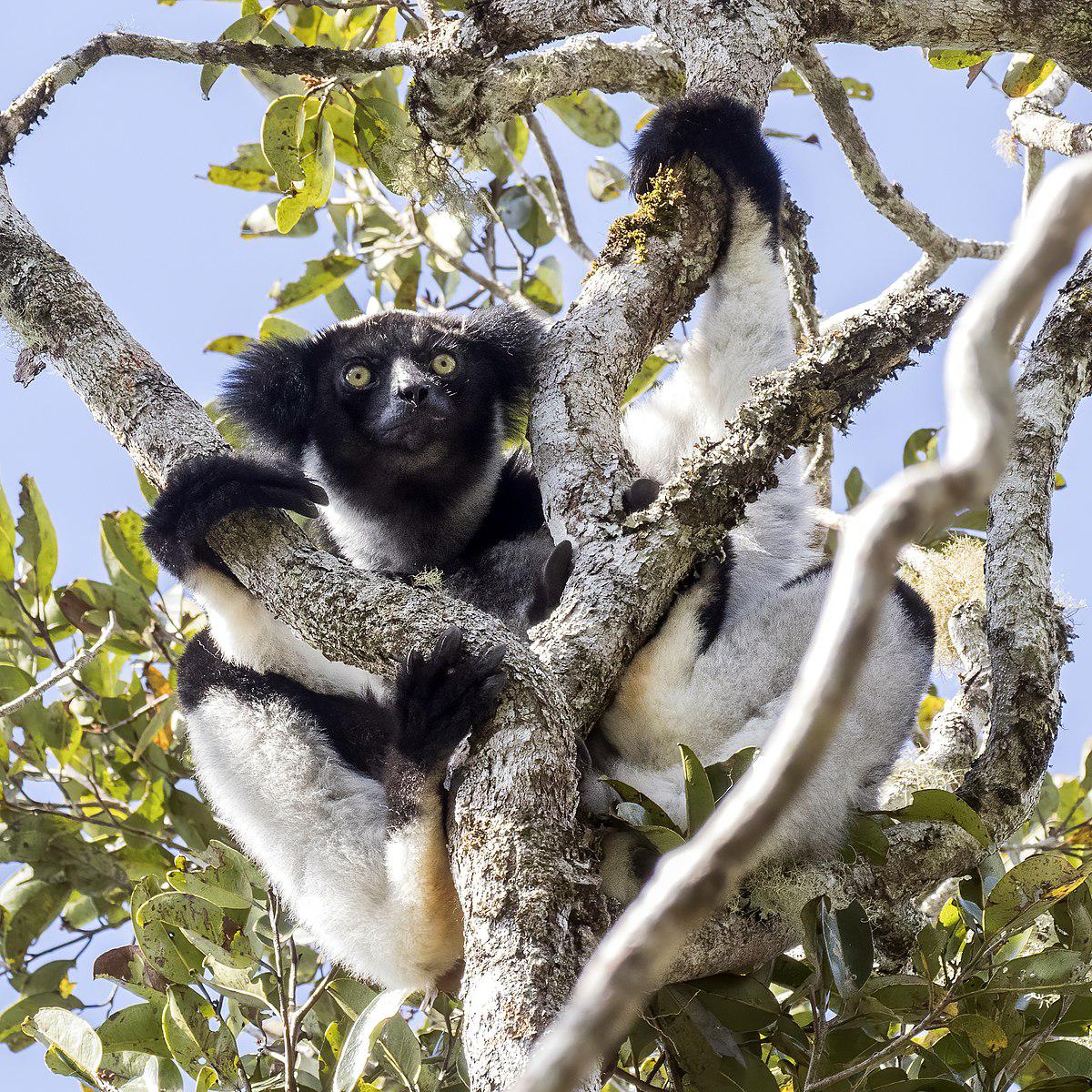
The Indri indri of Madagascar are not only the largest of the lemur species, they’re also talented singers. And now, thanks to a new study, they might be the next piece to solve the mystery of “where does music come from?”
As it turns out, it might have not started with humans.
“There is longstanding interest in understanding how human musicality evolved, but musicality is not restricted to humans,” said Dr. Andrea Ravignani, leader of an international research team whose primary focus is finding musical abilities in primates, according to Sci News.
She continued that “looking for musical features in other species allows us to build an ‘evolutionary tree’ of musical traits, and understand how rhythm capacities originated and evolved in humans.” Being one of the few non-human mammals capable of this kind of musical feat made them the perfect candidates for researchers looking to study the potential origins of rhythm.

An indri lemur on Wikipedia.
upload.wikimedia.org
“In the primate family tree they’re on the exact opposite end from us. In studying lemurs and studying primate evolution, that allows us to look at the history of primates and how we evolved,” Alanna Marron, lead educational technician at the Duke Lemur Center said in an article for USA Today.
Lemurs have a history of being a malleable species. The Duke Lemur Center explained that these adorable monkey-squirrels floated from Africa to Madagascar by accident, and dropped into brand new biological challenges that required adaptation to survive. Perhaps singing was one of the adaptations.
These tree-dwelling chorus singers fill the rainforest canopies with a series of loud, uniquely high-pitched howls, sounding a bit like an eerie squeak toy that’s being slowly squeezed. As social creatures, Lemurs might use the calls to mark territory, attract mates and give warning signals. “Everyone has a different part in it,” said Marron. “Usually, the adult pair is the one in the family group that does the most of the singing…If they feel scared or threatened, they will make vocalizations to warn everybody else in the area.”
Singing indri lemur.
www.youtube.com
Okay, they make sounds, but is it music? Research says “yes.”
The study, published in the journal Current Biology (paywall), shared that researchers listened to 636 recordings of vocalizations from 39 adult indris. After dedicating 12 years to the task, the team discovered that the lemurs could sing with categorical rhythm.
For those wondering what the heck that means (I sure did), Dr Ravignani explained that “rhythm is categorical when intervals between sounds have exactly the same duration (1:1 rhythm) or doubled duration (1:2 rhythm).” It’s what makes a song recognizable even when played or sung at different speeds, and it’s universally found in human music, but never before heard in animals minus birds.
The lemurs even manage to sing in a rhythm similar to “We Will Rock You,” according to the study. That’s something most humans can’t accomplish even on the best karaoke night.
As the “last common ancestor between humans and indri lived 77.5 million years ago,” it certainly gives some interesting insight as to how our sense of music might have started as a means for survival. Although it doesn’t indicate why some people are blessed with a keen sense of rhythm, and others (like myself) struggle to “feel the beat.” Don’t even get me started on pitch.
